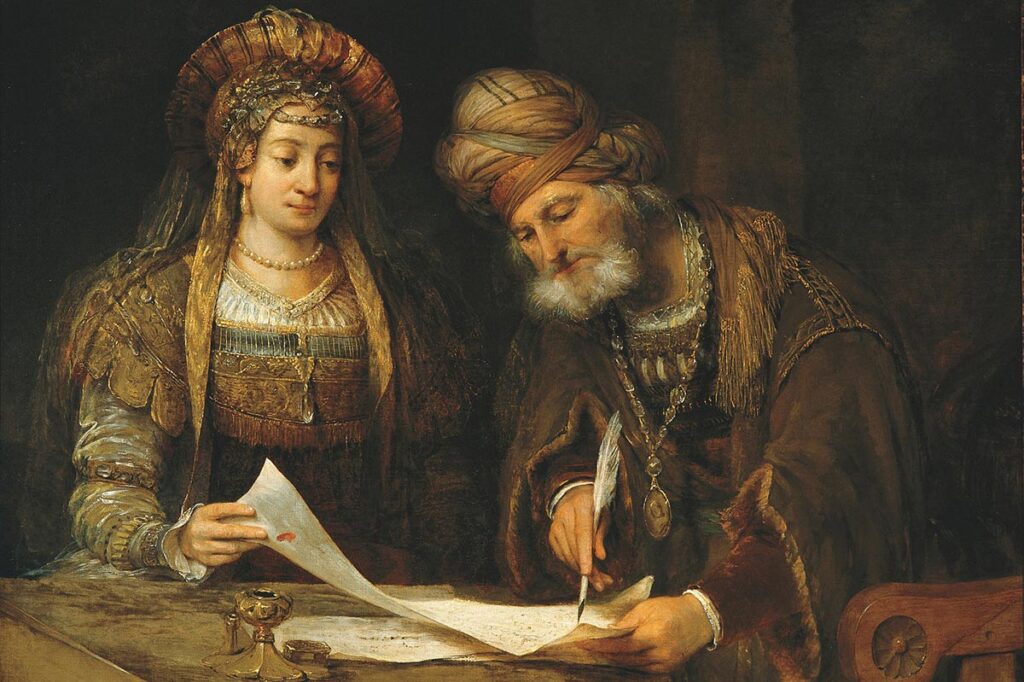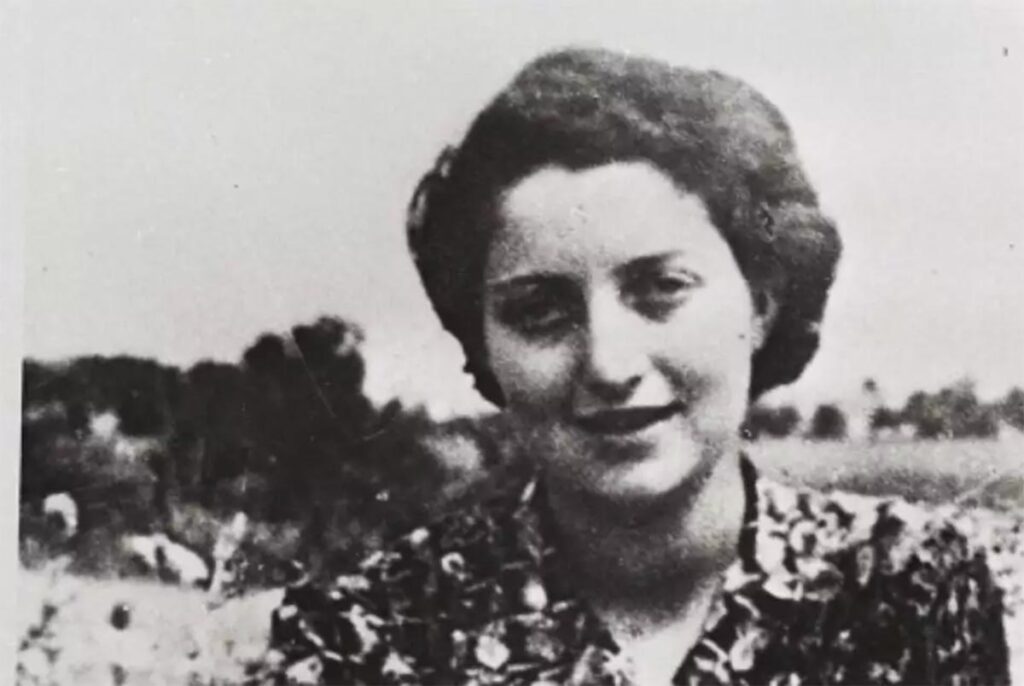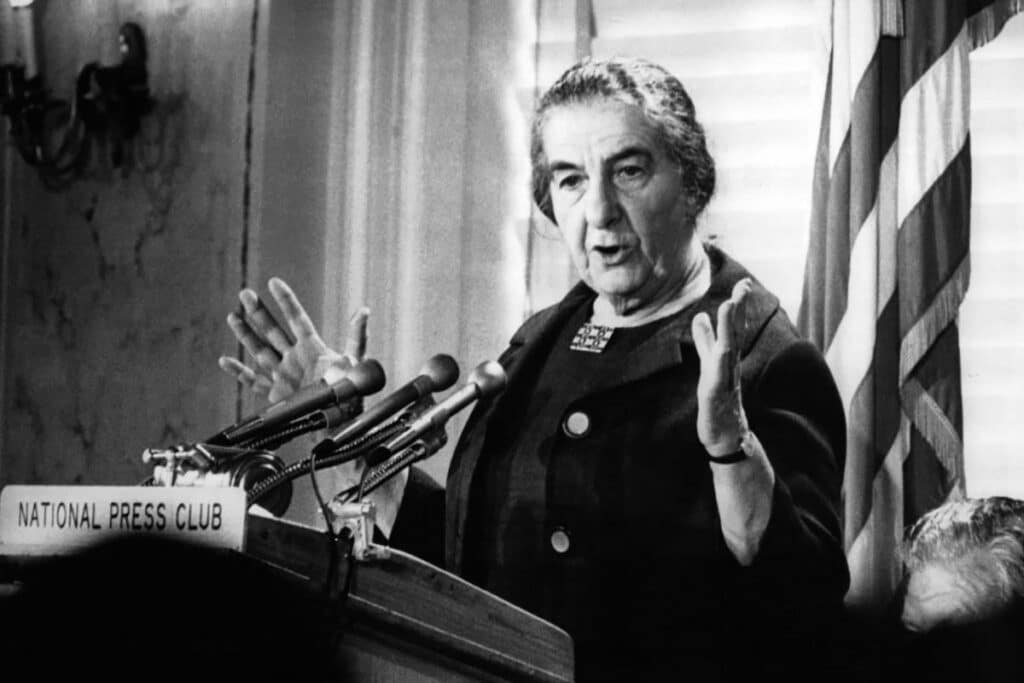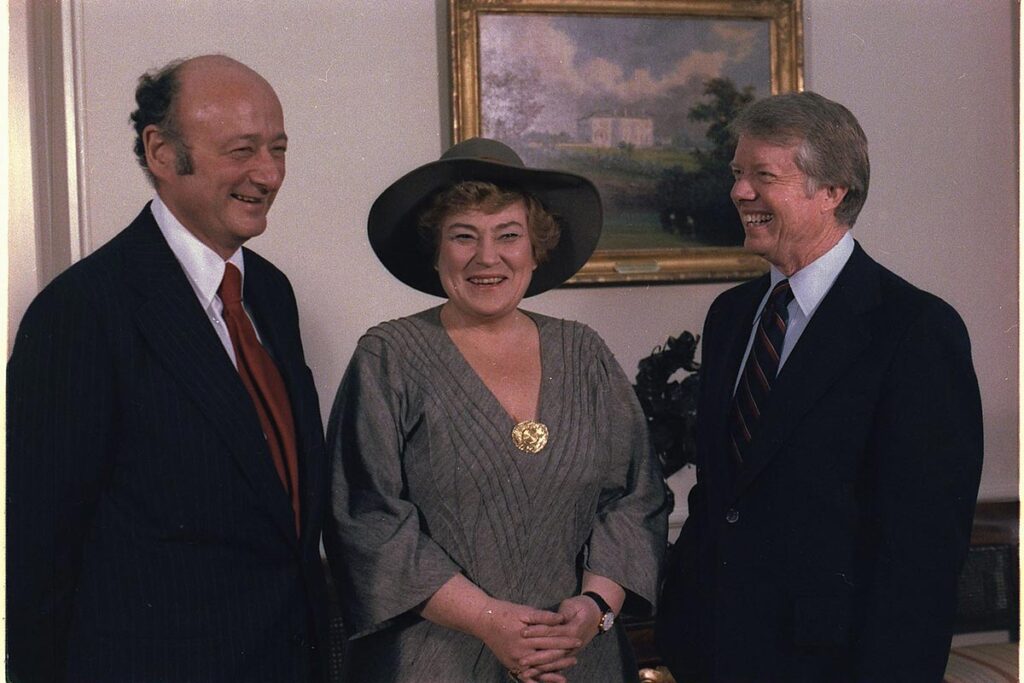They were queens, paratroopers, scholars and spies. Some held guns, while others held office. Some are still famous, while others have been forgotten by history — until now. In honor of Women’s History Month in March, let’s explore the legacies of five Jewish women who each changed the world in their own unique ways.
Queen Esther

The story of Queen Esther and Purim is set in ancient Persia during the reign of King Ahasuerus, which began in 486 B.C.E.
The king had just disposed of his wife and was in the market for a new one. So naturally, he hosted a beauty pageant, which must be how people found love before Tinder.
The winner of the beauty pageant was a Jewish girl named Esther. But before she went into the palace to meet her new husband, her cousin or uncle (no one’s really sure) named Mordechai gave her some critical advice for that time: don’t tell anyone you’re Jewish.
The king spent most of his time partying and drinking, while his second-in-command, Haman, did his best to run the show. Haman was known for his intense animosity toward the Jews.
When Haman — the king’s second-in-command — asked Mordechai to bow down to him, he refused on the grounds that Jews don’t bow to anyone but God.
Well, Haman didn’t like that. In response, he took the drastic step of asking the king for permission to kill every Jew in the empire. The king, who was likely drunk at the time and completely unaware that his queen was Jewish, gave Haman approval for his genocidal plan.
Haman started planning and even chose a day for when he would start the genocide. You’ve got to be organized when you’re wiping out your emire’s religious minorities, you know?
Understandably, the Jews of Persia started freaking out. Thankfully, they had a secret weapon in Queen Esther.
The king may have been incompetent, but he really liked his queen. When she told him that one of his closest advisors was planning to murder her and all her friends and family, he became furious.
Haman just happened to be in the room at the time, sweating buckets. All his begging and pleading couldn’t change the king’s mind. He was publicly hanged, and the date that he’d chosen to kill all the Jews became a day of celebration that we still honor to this day.
The Jewish holiday of Purim more or less exemplifies the old joke, “They tried to kill us, they failed, let’s eat.” It involves feasting, drinking, wearing costumes, and just generally celebrating the fact that we’re still here.
It’s all thanks to Queen Esther, who used her power to save her people. What an icon.
Asenath Barzani
Asenath Barzani was born in a medieval Kurdish community which was, like most other communities at the time, led by men. Her father, Shmuel Barzani, had founded several yeshivot — Jewish schools that were only open to men.
There was just one problem. Shmuel had no sons, and someone needed to carry on his legacy. So he did something revolutionary: he taught Asenath, hoping she would become his successor.
Asenath may have been a trailblazer, but she still lived in a traditional community. When she got married, she set up an unusual arrangement — she made her husband promise that he’d never make her do any domestic work so she could focus on her Torah studies.
Although he agreed, when Asenath’s father died, her husband took over the yeshiva. Even though Asenath led the students through their rabbinical training, she didn’t get credit for it as the yeshiva head.
Asenath outlived her husband, so eventually, she ended up officially running the yeshiva. Plus, she still found time to study on her own, write poetry and, of course, to flex her supernatural powers.
Okay, so that last one is more myth than fact. According to legend, Asenath had a direct line to the mysterious powers of the universe.
When a synagogue burst into flames, she alerted the angels, who stopped the fire. She warded off intruders by calling out holy names. She was even able to limit the number of kids she had so she could spend her time studying and leading. In the days before birth control, that certainly seemed like magic.
For centuries, Middle Eastern Jews made pilgrimages to Asenath’s grave. Although the Jewish community was ethnically cleansed from Iraq, no one can erase Asenath’s incredible legacy.
Hannah Szenes

Now, let’s fast forward to 1944. Deep in the forest, somewhere remote in Yugoslavia, out of the blue, three female parachutists from Mandatory Palestine fall from the sky. Among them is a woman named Hannah Szenes.
Szenes was on a mission. She knew that one woman wouldn’t be able to save all the Jews of Europe, and that she might not make it back alive.
None of that mattered though because this was personal. Szenes had been born in Hungary. She escaped the constant antisemitism by moving to Mandate Palestine in 1939.
Things weren’t peaceful there, either, so she joined the Haganah, the largest Jewish paramilitary in the region.
The Jews of Palestine weren’t just going to let the Nazis ravage Europe. In cooperation with the British army, they decided to send parachutists into Europe to rescue whatever Jews they could.
Among the 250 who applied, only 32 were selected, including Szenes.
When Szenes and her team arrived in Yugoslavia, they linked up with Jewish partisans, who were amazed to see a woman from Eretz Israel drop from the sky.
The partisans crossed from Yugoslavia into Hungary in the middle of the night. At some points, they had to swim with all their supplies on their backs. To keep the rifles dry, Szenes swam across five or six times.
The mission was incredibly risky, especially because Szenes knew that her papers might not hold up to scrutiny.
Sure enough, they didn’t. Before Szenes could save anyone, she was arrested and thrown into a Hungarian prison.
Her captors tortured her every single day, but she refused to tell them a thing or even to beg for mercy, so they executed her after five months.
Refusing to put on a blindfold, she died exactly as she’d lived: staring defiantly into the eyes of people who hated her, knowing she was on the right side of history.
Why did she do it? Why did she parachute into Nazi-occupied territory with sketchy papers, knowing she might die? She told her friend, shortly before she was arrested: “Even if they catch me, the Jews will know that at least one person tried to reach them.”
European Jews needed to know they hadn’t been forgotten. Szenes became a symbol of Jewish solidarity across borders.
Today, Szenes is considered a hero in Israel — and not just for her bravery and strength. She was also a talented poet, and her poem “Halikha LeKeisarya,” is one of Israel’s most famous folk songs.
Golda Meir
Golda Meir, also known as Israel’s Iron Lady, was the Middle East’s first — and thus far only — female head of state. Both grandmotherly and tough as nails, Meir led Israel during the 1973 Yom Kippur War.
Meir was born in what is now Ukraine. She remembered her father boarding up the front door and locking her in the cellar. It wasn’t a punishment but was a way to keep her safe from the pogrom that was coming.
Meir never forgot what it felt like to hide from her neighbors’ rage, and she refused to spend her life cowering.
Even after her family moved to the U.S., Meir didn’t feel safe. She believed there was only one place for a Jew, and that was their historic homeland.
She moved to Mandate Palestine in 1921. For the next two decades, she watched as the world turned away increasingly desperate Jewish refugees. She became even more convinced of what she had always known: the Jewish people didn’t need the world’s sympathy. They needed strength and action.

That strength finally came in 1948, when the modern state of Israel was born. Meir was one of only two women to sign the new country’s Declaration of Independence.
Though she was active in politics, she couldn’t have imagined that she would one day lead the Jewish state. But that’s exactly what happened. She became Prime Minister in 1969, during a difficult time for Israel.
As prime minister, she kept her promise to herself that the Jews would never cower again — but it wasn’t easy. The 1970s saw an unending stream of terror attacks against Jews and Israelis all over the world. There were massacres, hijackings, and the murder of 11 athletes at the Munich Olympics.
Worst of all was the Yom Kippur War. The 1973 attack took Israel completely by surprise. Thousands died and though Israel ultimately won the war, the public was seething.
Why hadn’t the country been prepared? Where were their defenses? Although an inquiry found that Meir wasn’t responsible for the failures that led to the war, she knew she had lost the public’s trust. She resigned shortly after the war, and died four years later.
Despite her controversial legacy, Meir remains an icon all over the world — a complicated, fascinating, and very human icon.
Bella Abzug

There are plenty of Jewish women who campaigned for social justice, but Bella Abzug stands out among them.
Even as a little girl, Abzug wasn’t into gender norms. She didn’t like that her synagogue separated men and women. She really didn’t like that she wasn’t allowed to say the mourner’s Kaddish for her dad after he died.
She was only 13, but she defied her rabbi’s instructions and said the Kaddish anyway. Why should only boys get to pray for their deceased parents?
As she grew up, Abzug kept on breaking norms. She earned a law degree and made a name for herself as a tenant rights, labor rights, and civil liberties attorney. In 1970, she ran for Congress — and won.
In 1974, she introduced the first-ever federal bill supporting gay rights, known as the Equality Act of 1974. Today, virtually all Democrats support gay rights, but in 1974, it wasn’t exactly a popular stance.
Abzug was particularly interested in defending Jewish rights, including the right to self-determination.
When the U.N. declared Zionism to be racism in 1975, Abzug used her platform to argue that Zionism is a liberation movement. (The resolution was ultimately revoked in 1991.) Abzug fought for social justice causes until her death in 1998. She blazed a trail for social justice activists everywhere — especially women, Jews, and other minorities.
So there you have it. Five Jewish women who changed the world in their own ways, proving that Jewish women really can do anything that a man can do…and in heels (if that’s what they want to wear).
